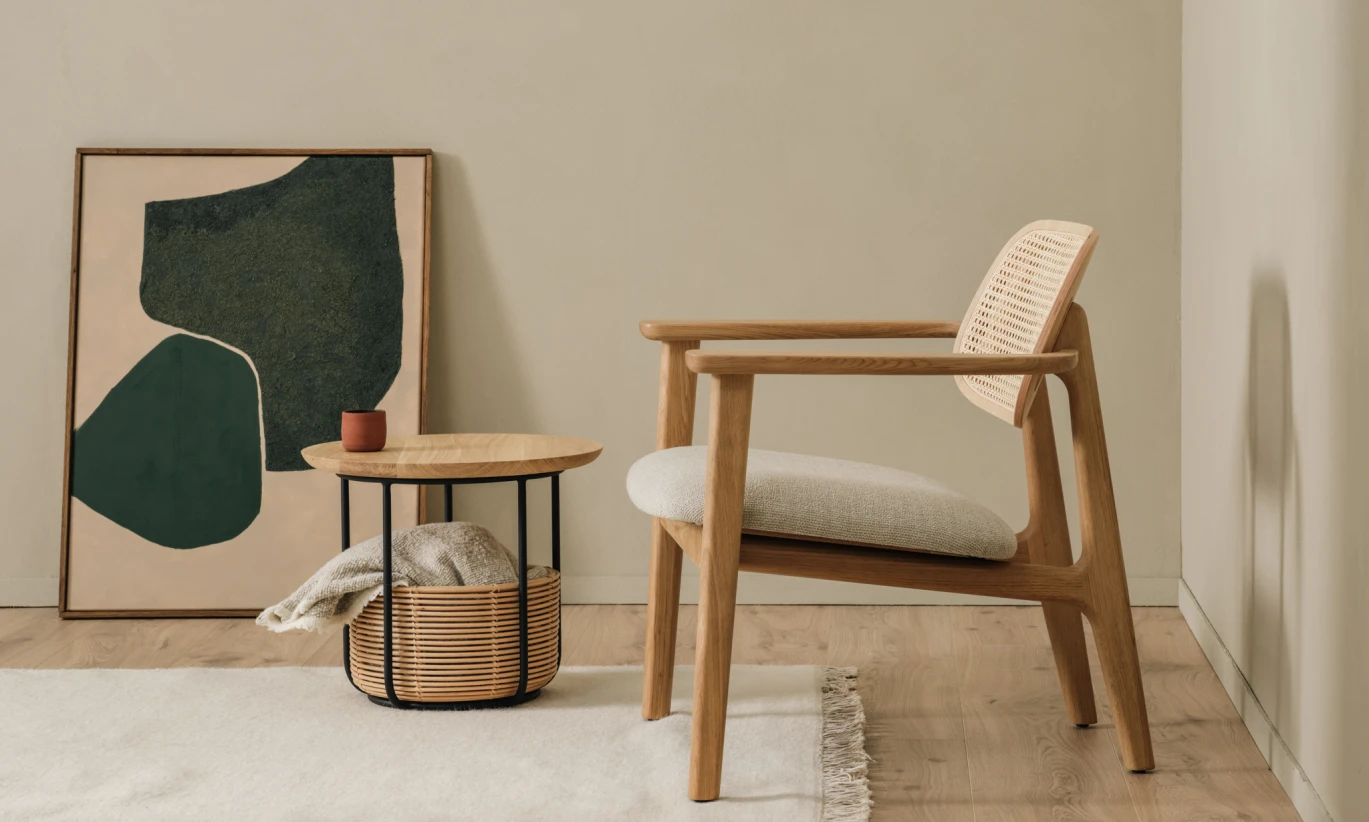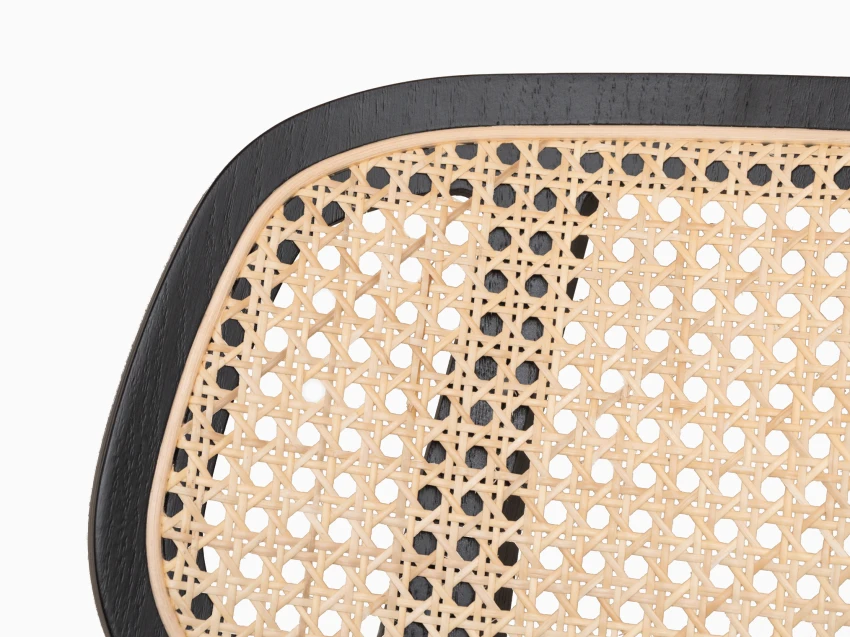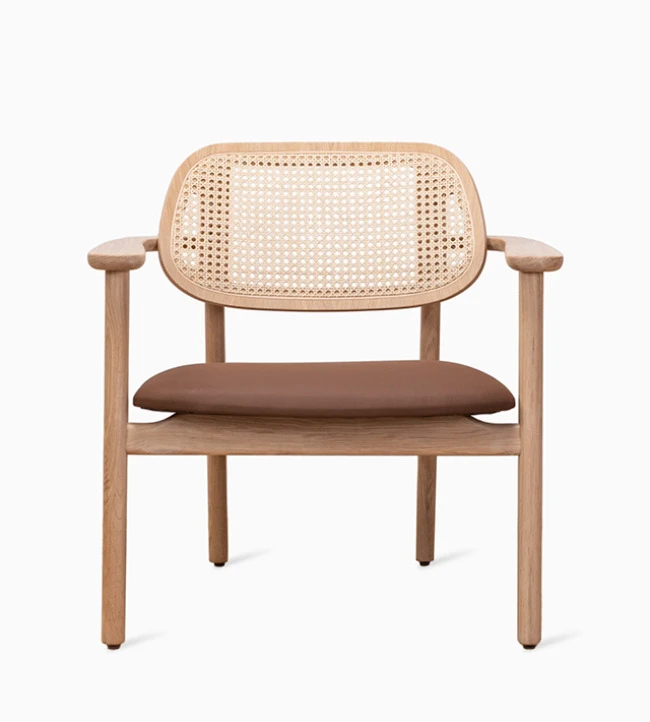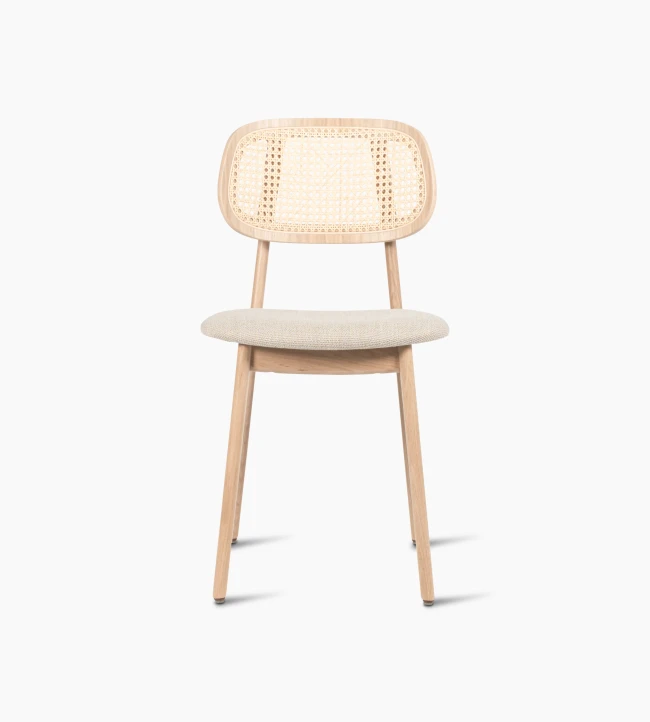Canework
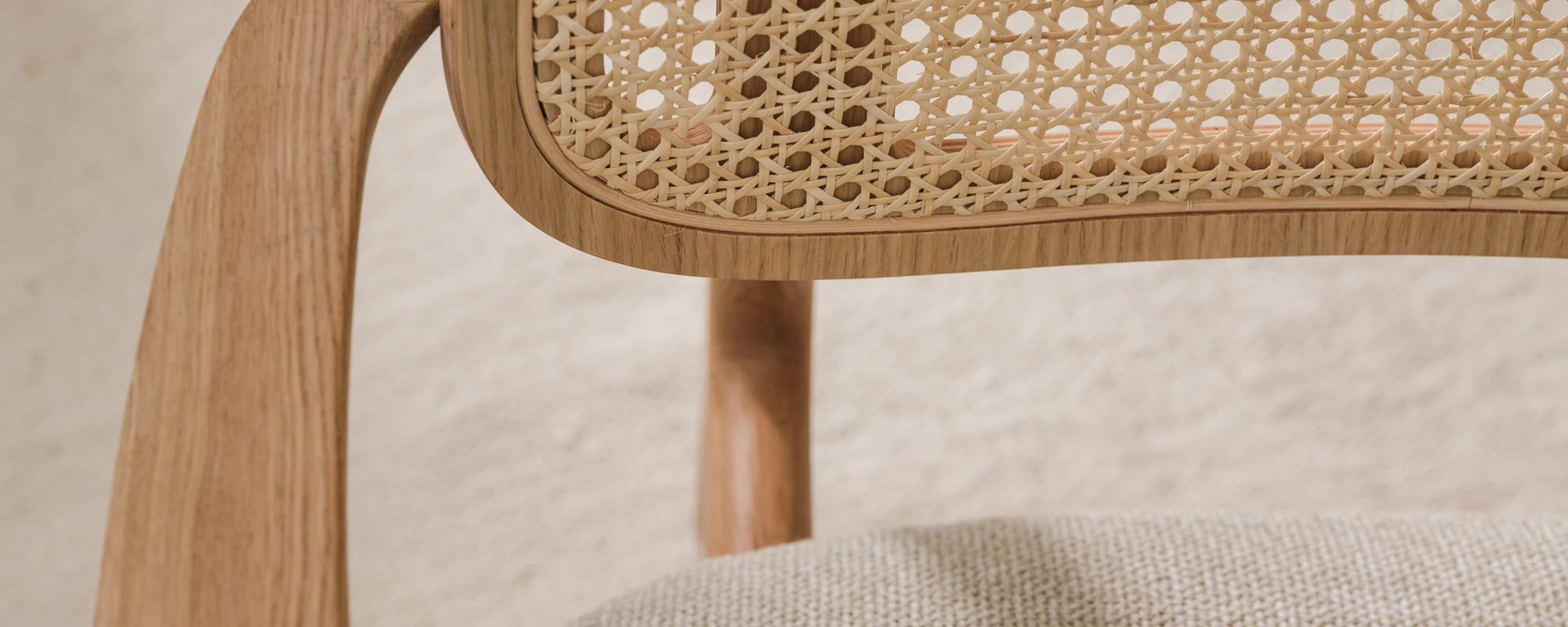
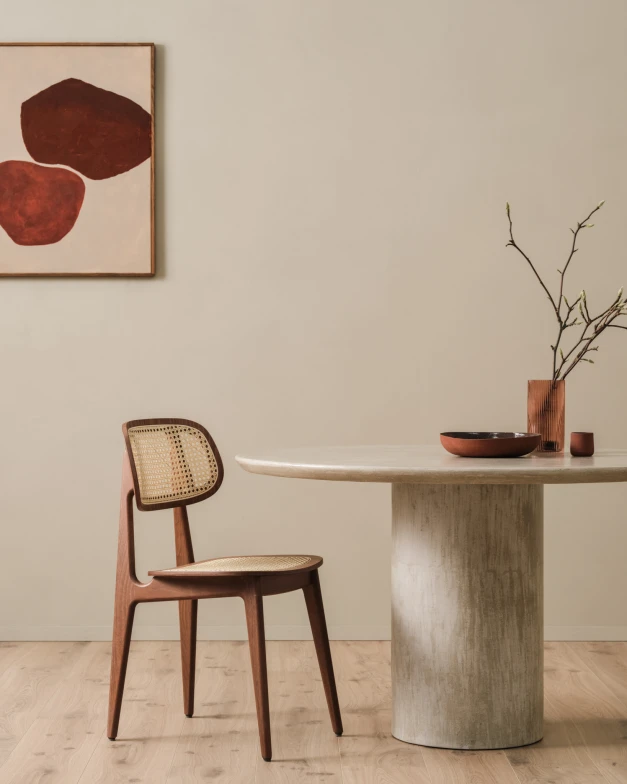
Iconic weave with exceptional characteristics
Canework, known for its decorative and intricate cut-out design, stands out as an iconic material. Crafted from rattan strips, this natural material combines durability, flexibility, and sustainability. The first pieces of furniture with canework appeared around 1700 and the visually appealing material has only gained popularity ever since.
About canework
To produce fibers for weaving, the outer layer of harvested rattan shoots is peeled and sliced into strips. These strips are then bonded together to form a continuous long fiber. Using the octagonal weaving technique, the fibers are woven into canework mats which are carefully placed into a groove encircling the seat frame and secured with wood glue. Prior to weaving, the mats undergo a brief water immersion to enhance their flexibility. Once dried, the rattan contracts, providing the seat with the desired level of tension.
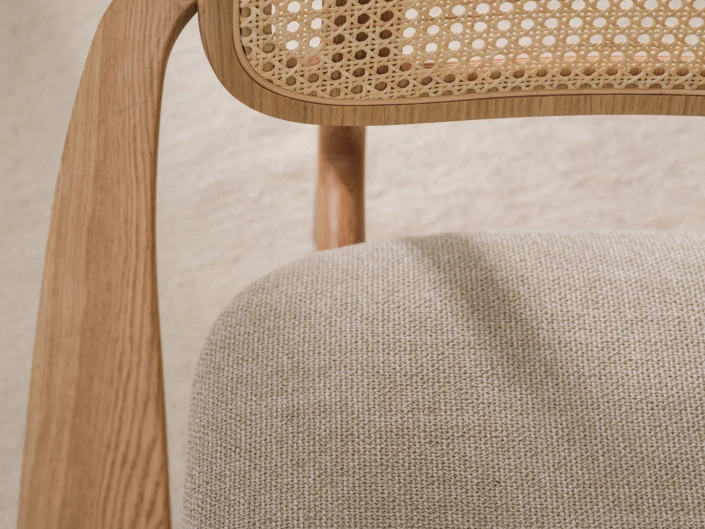
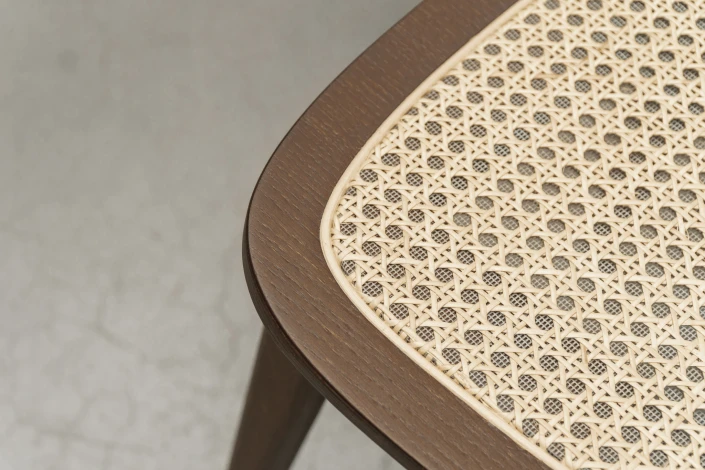
Enhanced support with mesh
To increase the durability of canework, especially in high-traffic environments such as restaurants and cafés, Vincent Sheppard has subtly integrated a polyester mesh beneath the canework. This nearly invisible synthetic mesh is strategically stretched under the seat, offering additional stability. The supportive mesh is a standard feature in the canework seats of the Titus collection, ensuring that every piece is designed for both elegance and endurance.
Maintenance cane
Rattan is easy to maintain: clean it occasionally with a damp towel and some mild soap. Avoid using too much water. "Hairs" cannage on the surface that peel off can be shaved off with a standard shaver.

Characteristics
Rattan, much like all natural materials, boasts unique variations in color and texture, imparting vibrancy and vitality. Its delicate hue radiates a comforting warmth within people's homes. Natural brown discoloration is inherent to the material.
The material offers stability and elasticy. Rattan is sturdy yet flexible, offering comfort even without the need for cushions.
Canework is inherently sustainable, as the rattan palm relies on biodiversity for its growth. Thriving in symbiosis with neighboring trees, rattan's usage aids in rainforest preservation. Furthermore, these palm trees regenerate swiftly post-harvest, sequestering more CO2 than traditional trees.
As rattan shell strips are bonded to form long fibers, there is a chance the octagonal weave might slightly peel off, leading to ‘hairs’ on the surface. This occurrence is typical and does not affect the material's integrity. If the filament fully breaks, this falls under the warranty coverage.
